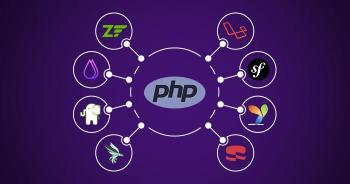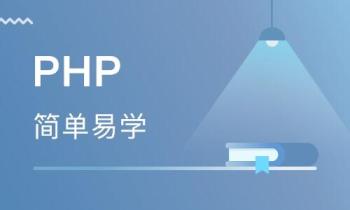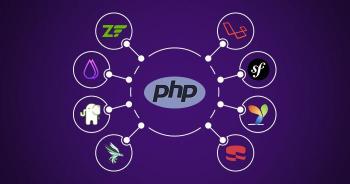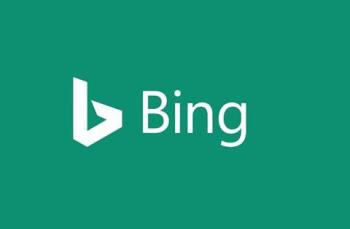在PHP中实现一个简单的区块链可以帮助理解区块链的基本概念和工作原理。下面是一个基本的PHP区块链示例,包括区块的定义、区块链的创建以及区块的添加和验证。
### 1. 定义区块结构
首先,我们需要定义一个区块的结构。每个区块通常包含以下属性:
- **index**: 区块在区块链中的位置。
- **timestamp**: 区块创建的时间戳。
- **data**: 区块存储的数据。
- **previous_hash**: 前一个区块的哈希值。
- **hash**: 当前区块的哈希值。
```php
<?php
class Block {
public $index;
public $timestamp;
public $data;
public $previous_hash;
public $hash;
public function __construct($index, $timestamp, $data, $previous_hash) {
$this->index = $index;
$this->timestamp = $timestamp;
$this->data = $data;
$this->previous_hash = $previous_hash;
$this->hash = $this->calculateHash();
}
// 计算当前区块的哈希值
public function calculateHash() {
return hash('sha256', $this->index . $this->previous_hash . $this->timestamp . json_encode($this->data));
}
}
?>
```
### 2. 创建区块链
接下来,我们创建一个区块链类,用于管理区块的添加和验证。
```php
<?php
class Blockchain {
public $chain = [];
// 初始化区块链,创建创世区块
public function __construct() {
$this->chain = [$this->createGenesisBlock()];
}
// 创建创世区块
private function createGenesisBlock() {
return new Block(0, "01/01/2020", "Genesis Block", "0");
}
// 获取最新区块
public function getLatestBlock() {
return $this->chain[count($this->chain) - 1];
}
// 添加新区块
public function addBlock($newBlock) {
$newBlock->previous_hash = $this->getLatestBlock()->hash;
$newBlock->hash = $newBlock->calculateHash();
$this->chain[] = $newBlock;
}
// 验证区块链的有效性
public function isChainValid() {
for ($i = 1; $i < count($this->chain); $i++) {
$currentBlock = $this->chain[$i];
$previousBlock = $this->chain[$i - 1];
// 检查当前区块的哈希是否正确
if ($currentBlock->hash !== $currentBlock->calculateHash()) {
return false;
}
// 检查当前区块的 previous_hash 是否等于前一个区块的哈希
if ($currentBlock->previous_hash !== $previousBlock->hash) {
return false;
}
}
return true;
}
}
?>
```
### 3. 使用示例
下面是如何使用上述类来创建一个简单的区块链并添加区块的示例。
```php
<?php
// 引入区块和区块链类
include 'Block.php';
include 'Blockchain.php';
// 创建区块链实例
$blockchain = new Blockchain();
// 添加新区块
$blockchain->addBlock(new Block(1, "02/01/2020", ["amount" => 4], "0"));
$blockchain->addBlock(new Block(2, "03/01/2020", ["amount" => 10], "0"));
// 输出区块链
echo json_encode($blockchain, JSON_PRETTY_PRINT);
// 验证区块链的有效性
echo "Is blockchain valid? " . ($blockchain->isChainValid() ? "Yes" : "No");
?>
```
### 4. 运行结果
运行上述代码后,你将看到类似以下的输出:
```json
{
"chain": [
{
"index": 0,
"timestamp": "01/01/2020",
"data": "Genesis Block",
"previous_hash": "0",
"hash": "a3f5e6..."
},
{
"index": 1,
"timestamp": "02/01/2020",
"data": {
"amount": 4
},
"previous_hash": "a3f5e6...",
"hash": "b4g6h7..."
},
{
"index": 2,
"timestamp": "03/01/2020",
"data": {
"amount": 10
},
"previous_hash": "b4g6h7...",
"hash": "c5h7i8..."
}
]
}
Is blockchain valid? Yes
```
### 5. 解释
- **创世区块**: 区块链的起点,通常是手动创建的。
- **区块哈希**: 每个区块的哈希值是通过对区块的索引、前一个区块的哈希、时间戳和数据计算得出的。
- **区块链验证**: 通过检查每个区块的哈希值和前一个区块的哈希值来验证区块链的有效性。
这个示例展示了区块链的基本结构和功能,包括区块的创建、添加和验证。你可以在此基础上扩展更多功能,如工作量证明(Proof of Work)、共识机制等。





















匿名
2025-12-13
大大可以找下哈狗的1030吗,太想要那首歌了~谢谢!
匿名
2025-11-09
https://collaigo.com 免费在线拼图工具
匿名
2025-10-22
盖楼盖楼!
匿名
2025-08-11
沙发沙发
匿名
2025-08-10
https://at.oiik.cn/bing.html
匿名
2025-02-21
实用,我在开发https://minmail.app/时候使用到了